Good roads, bad fences
Collaborative and comparative ethnography poses a challenge that cannot be securely overcome only on a theoretical or a methodological level. The notion of emptiness, which emerged as an emic concept from Dace Dzenovska’s fieldwork in eastern Latvia, cannot be exhaustively operationalized and mechanically transferred to another locality. We doubted it was possible to find a fixed set of elements in the social form we call ’emptiness’ that would pre-determine a bounded field site in each of the postsocialist countries we are studying, or even that our research participants would necessarily call their environment ‘empty’. So we agreed that the Latvian emptiness would be a portable analytic, that our field sites would possess a family resemblance, and that our lateral comparison will progress along the resonant lines of our respective ethnographic experiences.
The team’s first cross-field visit, carried out in Latvia in early Oct 2021, was intended to sensitize each of us to the material, temporal and ideological constellations of the site of emptiness. Each of us came to Latgale – a region in eastern Latvia – with certain theoretical pre-conceptions and previous ethnographic experiences that were partially modified in the process of this participant co-observation. Our subsequent fieldwork is in turn shaped by the resulting aesthetic-theoretical sensitivity. In this blog I present snapshots from the cross-field visit in Latvia and from the early stages of my fieldwork in central Ukraine organized around two infrastructural elements: roads and fences. Although far from central to any of our cases, they nevertheless help us grasp similarities and differences as well as sketch out possible comparative dimensions across our field sites.
Our trip in eastern Latvia started with disappointment. Contrary to my expectations formed by the experience of living in Ukraine, Belarus, Hungary and Romania, every mile we covered on the way to Latgale did not translate into proportionately higher density of cracks, potholes, and bumps. With rare exceptions, even asphalted village roads were smooth, and dirt roads were not destroyed by agricultural machinery or carved with grooves. Dace tried to find as terrible a road as possible, but it still felt nothing like home for me.
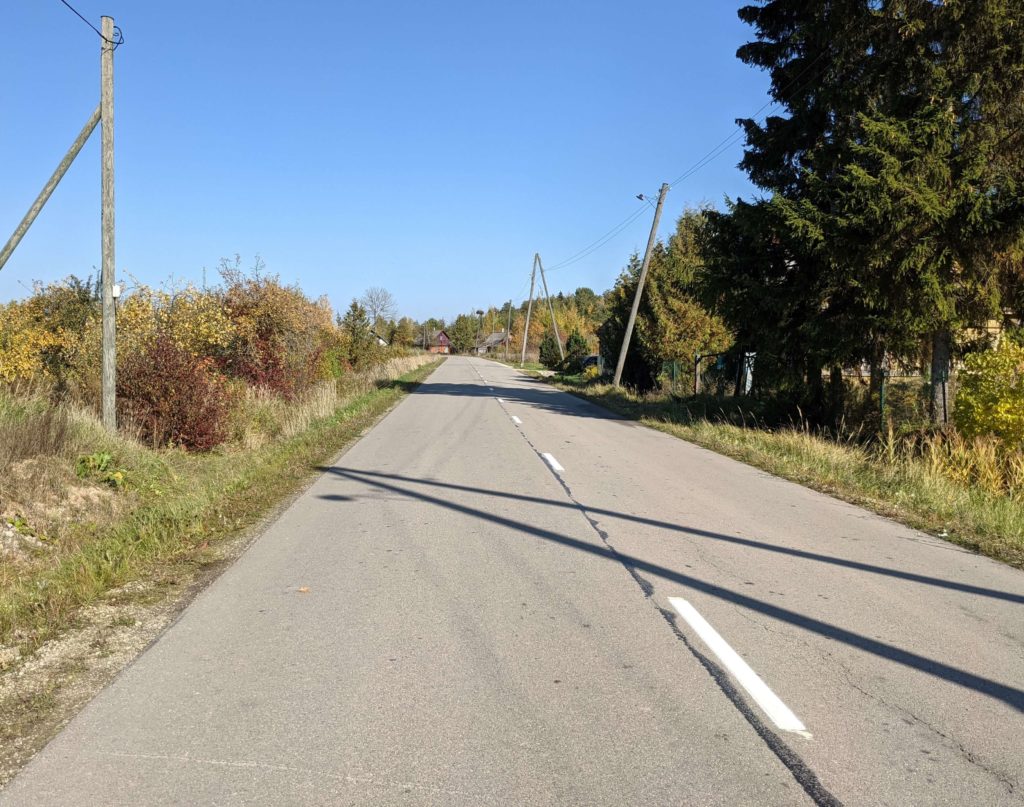
In contrast, a road in a rural area I’m researching in central Ukraine literally cost me money. I had taken a taxi from a small town, and most of the trip happened on the highway joining the capital city Kyiv and the second largest city Kharkiv. Recently renovated, this busy four-lane highway allowed the taxi to cover the first 50km to the village turn in 30 minutes. However, the mere 5km road to my final destination – a village church where I had arranged a meeting with my local contact – took half that time. As soon as we turned onto the village road from the highway, the driver wondered aloud whether this road had ever been repaired since Soviet times (I later learnt it never had). He had to drive in second gear, often bypassing large potholes through the grass. After 3km, the remnants of asphalt disappeared altogether and the dirt road had two large grooves that threatened to destroy the car’s suspension. After we finally arrived, the driver asked me for an extra 50 UAH (approx. £2.00) in compensation for the bad quality of the road.
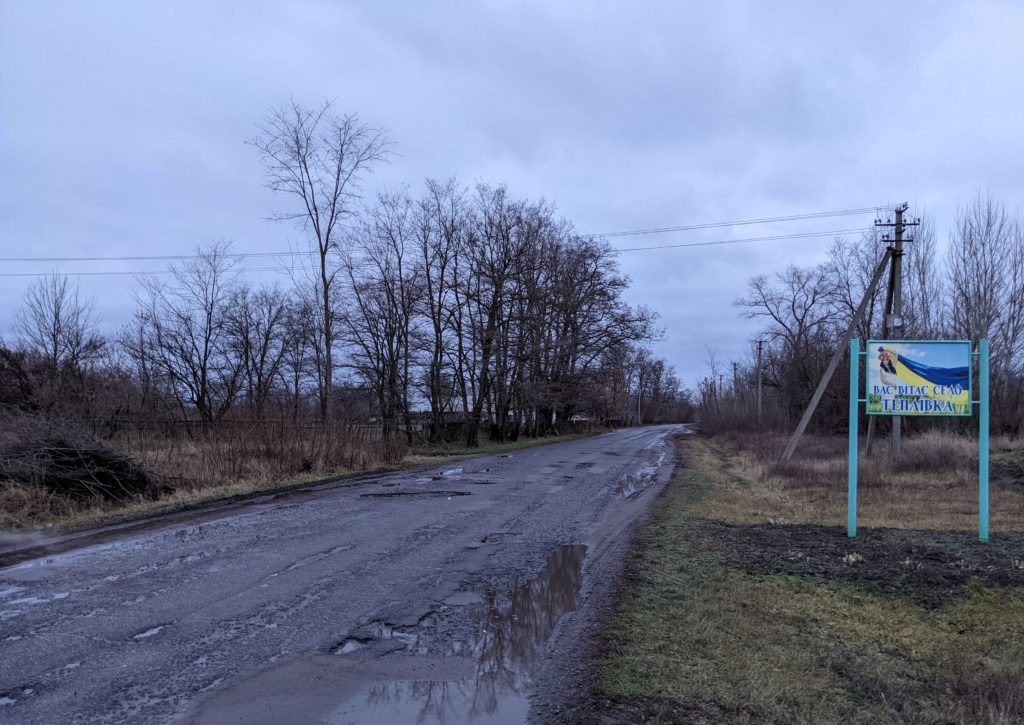
Although the histories of economic and demographic decline of the project’s respective field sites may be similar, the differences between the infrastructural environment of the sites of emptiness in Latvia and Ukraine signal the divergence between the infrastructural power of the state, as well as the differential geopolitical integration of both countries. The access to EU-funded projects in Latvia has facilitated a relatively even quality of transport infrastructure. The road system in Ukraine, in contrast, seems to map the country’s hyper-centralization, regional unevenness, and local patron-client networks. Whereas potholes signal outright neglect of common property, bumpy patches and short stretches of newly laid poor-quality asphalt testify to the nature of local electoral cycles.
The spatial differentiation between the public and the private catches the eye if one walks along countryside roads in Ukraine. In Latgale I didn’t notice any significant difference between the condition of common spaces and private yards. The contrast is stark in Ukrainian provincial settings. A broken country road may differ from a highway of national importance the same way it differs from driveways leading to private yards. One can almost see the limits of private space as the quality of the road abruptly deteriorates.
If in the Ukrainian countryside the driveways mark the limits of the ‘sovereignty’ of a household, the fence stands for the fortification of the castle. What struck me in Latgale was the scarcity of fences around the yards. For example, in one of the households we visited, there was a fence around the inner courtyard, but not between the house and the street. I had a brief conversation about this with the owner of the house, who told me she had nothing to be afraid of because there are even no drunkards left in the village. In a more extreme case, an old-believer cemetery and church we later visited had a gate without a fence around it (see Fig 3).

If in Latgale one can find gates without a fence, in a Ukrainian village there are fences without gates as in Fig 4 below. There’s obviously little immediate functional value in such a construction, but my further fieldwork has revealed a possible indicative value of fences in the story of communal and infrastructural degradation.
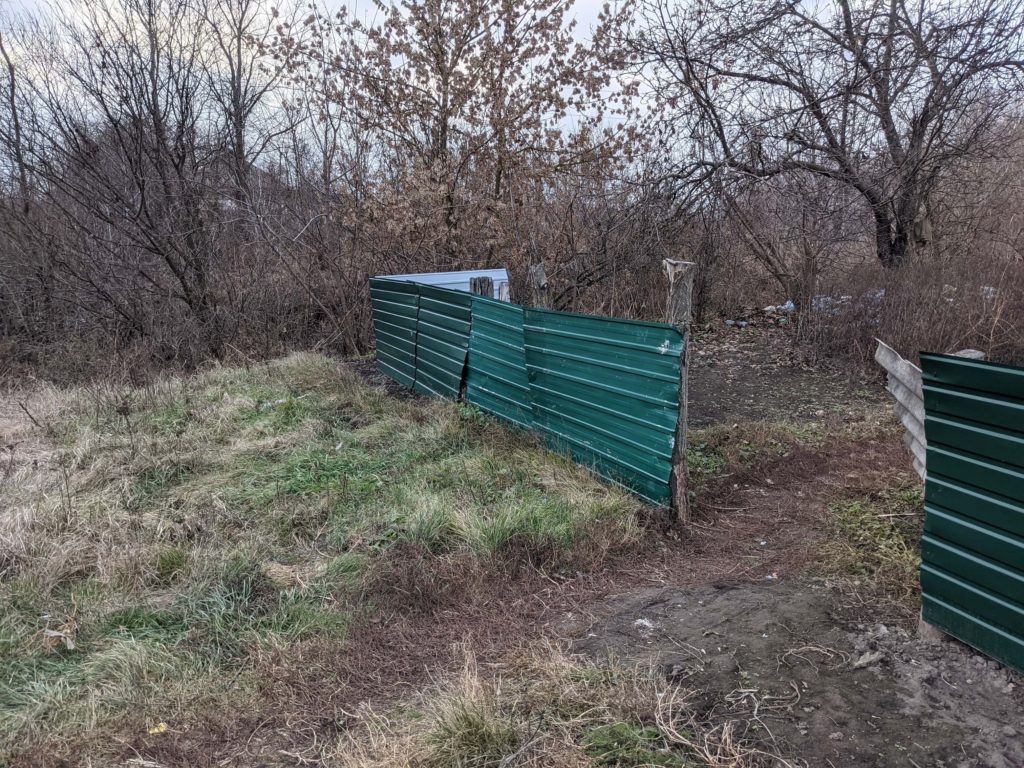
Older fences that I remember from my childhood in Ukraine in the 1990s were made of vertical wooden planks. The gates had a metal hook that could be opened from the outside. Slate, metal, or brick fences are ubiquitous now, although initially the last two were signs of the provincial nouveau-riches. A particularly fashionable type of fence is called ‘Euro-fence’: it is usually made of concrete poles and concrete planks that are inserted into grooves in the poles. Gates are preferably made of metal sheets with a lock on the inside. Talking about fences is enveloped in a hidden anxiety. Some people say they install them against stray animals, but then speculate that a burglar would think twice before climbing over a fence since this implies a hasher criminal punishment.
The production and installation technology of fences is relatively simple and can be performed by a small team. Even a small town would have several fence-makers, either informal teams or part of larger construction firms, many of them establishing their production facilities in former factories or farms. Often these are ‘start-ups’ that don’t last long, but since their products are in high demand, they can raise some money for a season or two. If the late Soviet industrial and communal agricultural basis for sociality allowed for permeable fences, the degradation of this basis provides material for the fortification of atomized households.

The absence of such cottage industries struck me in Lielciems[1]This is a pseudonym., a ghost town in Latvia whose population decreased almost fourfold after the local ceramic pipe plant was closed in 1994. A former electrician who used to work at the plant took us for a guided tour around two open-pit mines (now flooded) and the factory buildings. The mines have not been exhausted, but the severed economic ties with Russia – the energy supplier and the sales market – made clay extraction and the production of pipes, expanded clay, and bricks unprofitable. On the way from the mines to the production facilities, our guide invited us to his cottage house where he stored some of these ceramic products: pipes and bricks. I noticed that I hadn’t seen anybody in town using bricks from the factory for their private houses, garages, or fences. If this had been in Ukraine, there would have been several fence-makers and advertisements about their services at every corner. I took a piece of the pipe with me on my return to Ukraine.
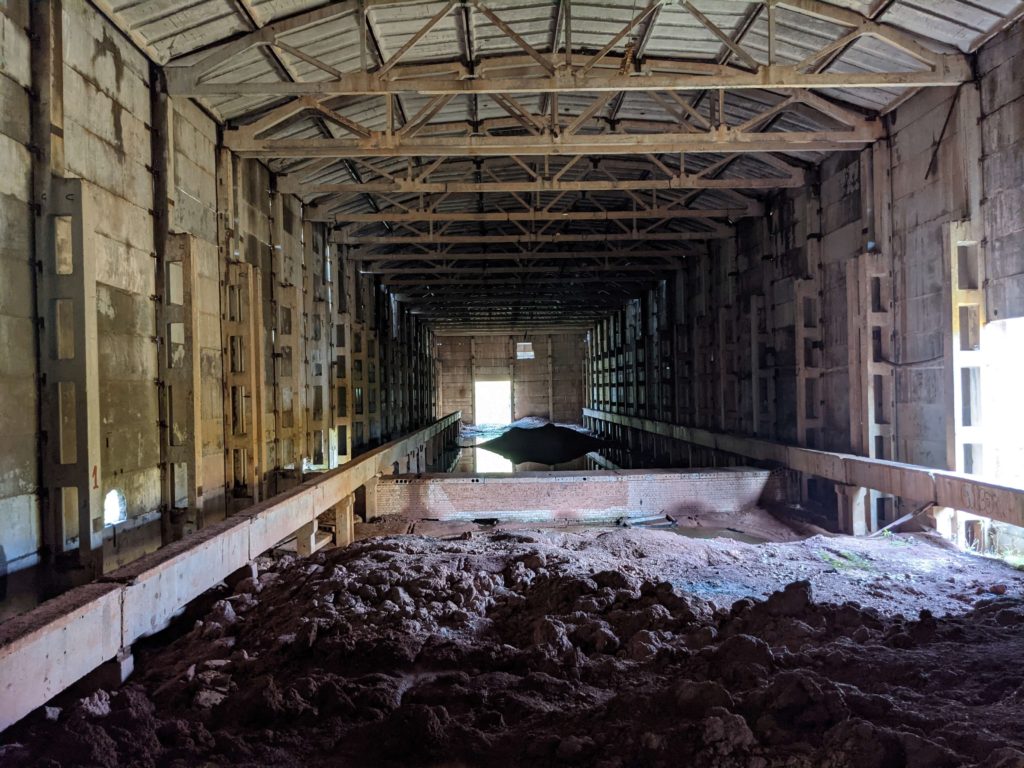
We were not alone in the ruins of the plant in Lielciems. Even though locals don’t seem to enjoy any use value from the remnants of their industrial past, it has acquired a symbolic value in the present. Exploring a drying facility, we encountered a German man who decided to spend his vacation visiting abandoned industrial sites across the Baltics. Through our mediation, he found a common interest with our guide: geocaching, a game of hiding and discovering containers with ‘treasures’. Besides planting ‘caches’, our guide was also collecting photos and documents of Lielciems, which he posted online. He told us of numerous organized groups of tourists that visit this place.
Although the production-based local community dissipates together with industry and infrastructure, it survives virtually and reterritorialized, and re-values the material conditions of its dissolution. A school museum in the village of Piedruia, where we started our Latvian journey, showcased objects some of which had been donated by those who have left the village, or collected from abandoned houses. Dace Dzenovska writes about the social process of the revaluation of discarded remnants from abandoned houses during talka, a collective effort to reconstitute values out of what was considered waste.
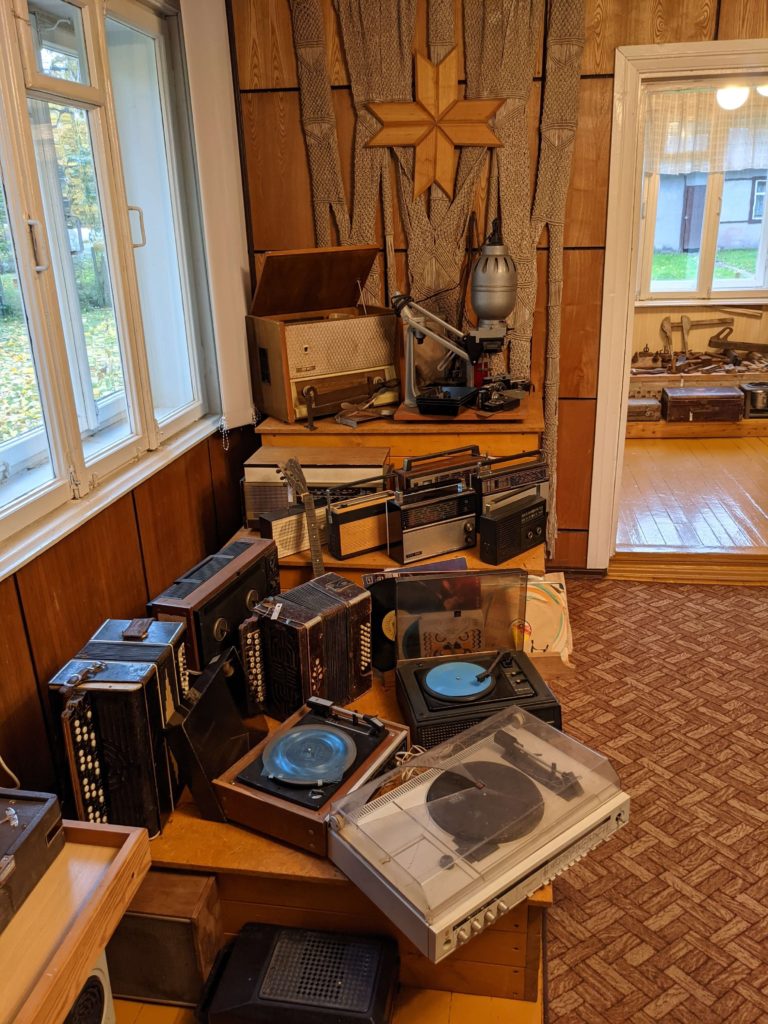
Whereas people organize around emptying places in Latgale, for central Ukraine this is in the background rather than something people reflect upon. Unheated and dilapidated, local museums – where these have been preserved – censor the materiality of the present, bridging the ethnocentric representation of medieval artifacts and the politicized symbols of the post-Soviet period. A local historian in Ukraine would be able to tell you the recent story of a certain village only if there was an 18th-century artifact there.
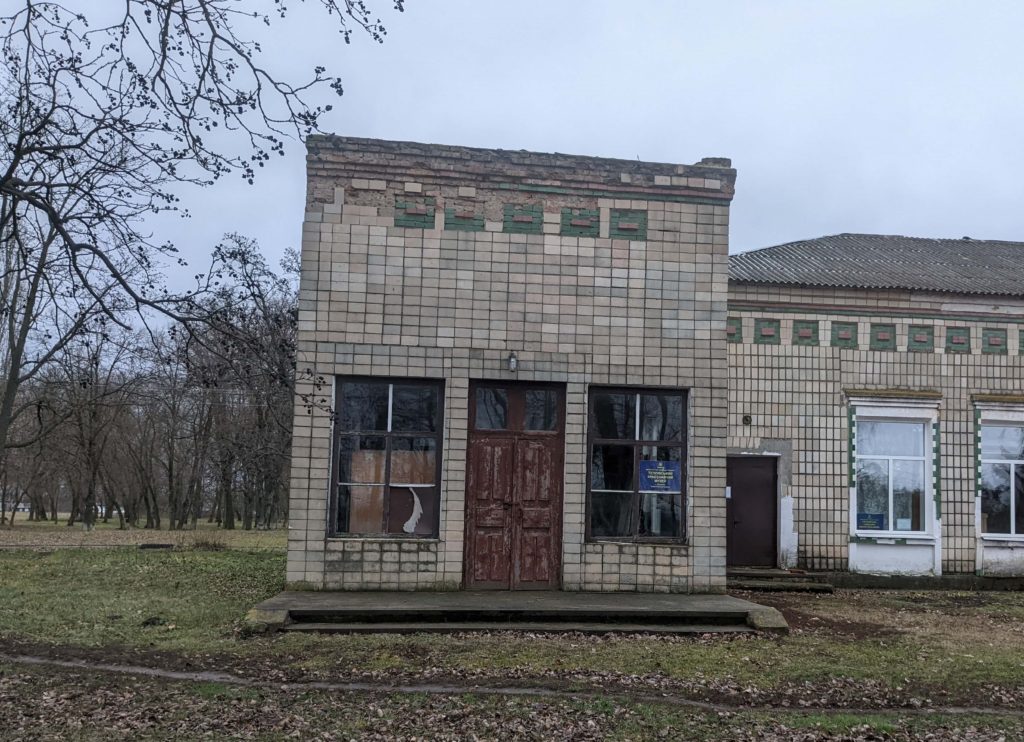
‘There is nothing to see’ in the contemporary Ukrainian countryside. An outsider will be shown remnants of a Russian aristocratic manor, barely visible under the tall grass, or a newly built church sponsored by wealthier local farmers. Memory either exists individually, among members of social networks who exchange old digitized pictures from their youth, or as a politicized invented tradition. Collective memory seems to have gone together with sociality based on common production and reproduction practices. Fragments of that sociality are either discarded or used pragmatically as fuel or as tinkering material.
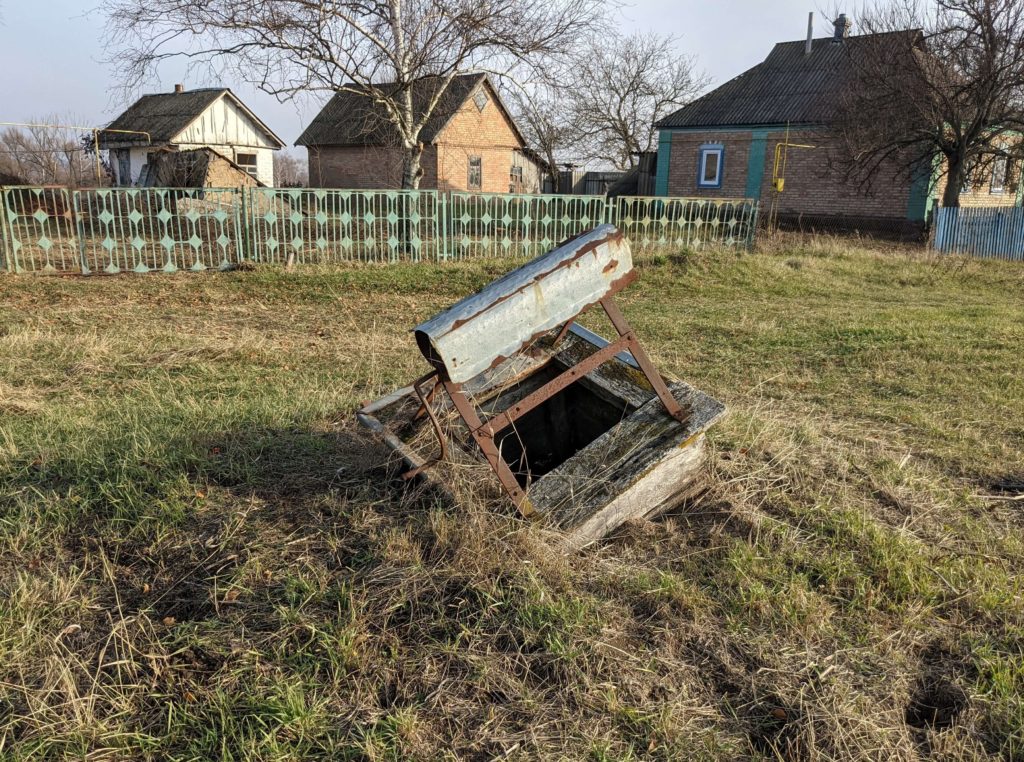
In a dying village of barely 30 inhabitants in Ukraine, I saw a collapsed well. Ten years ago it was still used and taken care of communally. The remnants of the well are situated in the corner of vyhin, a grazing ground in the centre of the village; there was a small grocery shop on the other side. Very likely, a pile of bricks that I spotted next to someone’s fence were once part of the shop building. Nowadays, those who could afford it drill wells behind their fences, while others have to walk several kilometres to the nearest shop along Kyiv-Kharkiv highway to buy drinking water. The rumours that circulate in the village concern funerals, drunken fights, short-term exploitative jobs, rare visits of relatives from cities, and robberies.
Elements of infrastructure that parse the sites of emptiness thus may point to the way sociality is organized under conditions of disinvestment, deindustrialization, and the withdrawal of the state. They may point to the degree of atomization and collectivity, vertical subordination to patron-client networks, or horizonal reciprocity. They raise questions that guide our next steps of anthropological theorization following the project’s resonance-based lateral comparison.
Footnotes
| ↑1 | This is a pseudonym. |
|---|